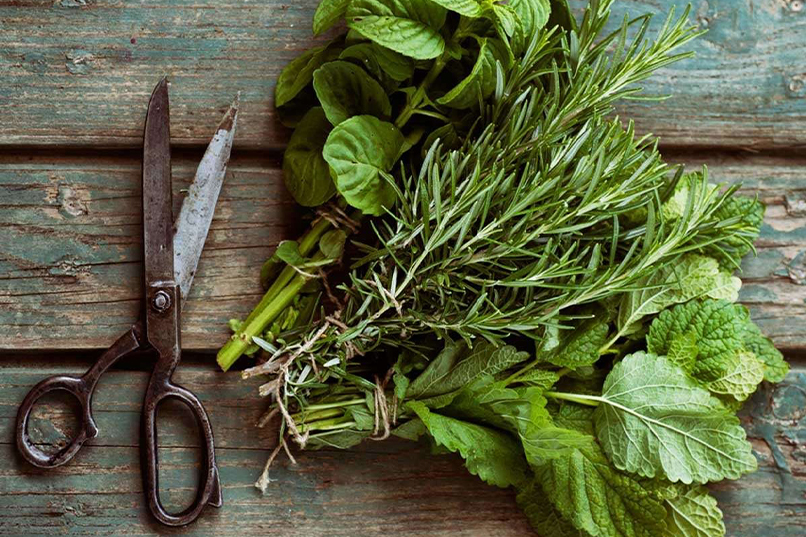Herbs have been used for their medicinal and culinary properties for centuries, and their popularity continues to grow today. The process of harvesting and drying herbs is essential to ensure that they retain their flavor and potency, and there are several techniques that can be used to achieve this.
In this article, we will explore the process of harvesting and drying herbs, including the different methods that can be used, and the best practices for achieving optimal results.
Harvesting Herbs
Harvesting herbs is a straightforward process, but it is important to ensure that the herbs are picked at the right time to maximize their flavor and potency. Most herbs are best harvested in the morning after the dew has dried, but before the sun gets too hot. This is because the essential oils that give herbs their flavor and aroma are at their peak during this time.
When harvesting herbs, it is essential to use clean, sharp scissors or a knife to avoid damaging the plant. Cut the stems of the herbs just above the second set of leaves from the bottom, leaving enough of the plant intact so that it can continue to grow and produce new leaves.
If you are harvesting annual herbs such as basil, you can harvest the entire plant when it reaches its maximum height, leaving a few inches of stem at the base. For perennial herbs such as thyme and rosemary, it is best to only harvest the top third of the plant to ensure that it continues to grow and produce new leaves.

Drying Herbs
Once you have harvested your herbs, it is time to dry them. Drying herbs is essential to remove any excess moisture from the leaves, which can cause the herbs to mold or spoil. There are several methods that can be used to dry herbs, including air-drying, oven-drying, and dehydrating.
Air-Drying
Air-drying is the most traditional method of drying herbs, and it is also the easiest. To air-dry herbs, tie them together in small bunches and hang them upside down in a warm, dry place with good air circulation. A well-ventilated room with low humidity, such as a pantry or attic, is ideal for air-drying herbs.
It is important to ensure that the herbs are not exposed to direct sunlight, as this can cause them to lose their flavor and color. The drying process can take anywhere from several days to a few weeks, depending on the humidity and temperature of the drying area.
Once the herbs are completely dry, remove the leaves from the stems and store them in an airtight container away from sunlight and moisture. This will ensure that the herbs retain their flavor and potency for up to a year.
Oven-Drying
Oven-drying is a quicker method of drying herbs, but it requires more attention to ensure that the herbs do not overheat or burn. To oven-dry herbs, preheat your oven to the lowest setting and spread the herbs out on a baking sheet lined with parchment paper.
Place the baking sheet in the oven and leave the door slightly ajar to allow air to circulate. Check the herbs every 15-30 minutes and rotate the baking sheet to ensure that the herbs dry evenly.
Once the herbs are completely dry, remove them from the oven and allow them to cool. Then, remove the leaves from the stems and store them in an airtight container away from sunlight and moisture.
Dehydrating
Dehydrating is a method of drying herbs that uses a machine specifically designed for this purpose. Dehydrators use low heat and air circulation to remove the moisture from the herbs, resulting in a quicker and more even drying process.
To dehydrate herbs, place them on the dehydrator trays in a single layer, making sure that the leaves do not touch each other.
Once the herbs are dry, remove the leaves from the stems and store them in an airtight container away from sunlight and moisture.
Choose the right time to harvest: As mentioned earlier, it is important to harvest herbs at the right time to ensure that they are at their peak flavor and potency. Most herbs should be harvested in the morning after the dew has dried, but before the sun gets too hot.
Use clean, sharp scissors or a knife: When harvesting herbs, make sure to use clean, sharp scissors or a knife to avoid damaging the plant. This will also help to minimize the risk of introducing any contaminants that could spoil the herbs during the drying process.
Use the right drying method: There are several methods that can be used to dry herbs, including air-drying, oven-drying, and dehydrating. Each method has its advantages and disadvantages, so it is important to choose the method that best suits your needs.
Avoid direct sunlight: When drying herbs, it is important to avoid exposing them to direct sunlight, as this can cause them to lose their flavor and color.
Store herbs properly: Once the herbs are dry, make sure to store them in an airtight container away from sunlight and moisture. This will help to ensure that the herbs retain their flavor and potency for as long as possible.
Label your herbs: Finally, make sure to label your herbs with the name and date of harvesting. This will help you to keep track of the herbs and ensure that you are using them at their peak freshness.

Harvesting Herbs
When it comes to harvesting herbs, timing is everything. Most herbs are at their peak flavor and potency just before they flower, so it is important to harvest them at the right time. Here are some tips for harvesting herbs:
Timing: Harvest your herbs in the morning, after the dew has evaporated but before the heat of the day sets in. This is when the essential oils are at their highest concentration in the leaves.
Pruning: When pruning your herbs, make sure to cut just above a leaf node. This will encourage new growth and help to keep your plant bushy and healthy.
Quantity: Don’t be afraid to harvest your herbs frequently. In fact, regular pruning can help to keep your plants healthy and productive throughout the growing season.
Variety: Experiment with different varieties of herbs to find the ones that work best for your needs. Some herbs are better for cooking, while others are better for medicinal use.
Use: Harvest only what you need and use your herbs immediately, or store them properly for later use. Fresh herbs can be stored in the refrigerator for several days, or you can freeze them for later use.
Drying Herbs
Drying herbs is a great way to preserve them for later use. Here are some tips for drying herbs:
Air-drying: Air-drying is one of the simplest and most effective methods for drying herbs. Simply tie your herbs in small bundles and hang them upside down in a cool, dry, and well-ventilated place. Make sure to label your herbs so you can keep track of what you’re drying.
Oven-drying: If you don’t have a lot of space to air-dry your herbs, you can also dry them in the oven. Spread your herbs out in a single layer on a baking sheet and place them in an oven set to the lowest temperature. Leave the oven door slightly open to allow moisture to escape.
Dehydrating: Dehydrators are a great tool for drying herbs quickly and efficiently. Simply spread your herbs out in a single layer on the dehydrator trays, set the temperature to the
Temperature: When drying herbs, it is important to use the right temperature to ensure that the herbs retain their flavor and potency. Different herbs require different drying temperatures, so be sure to research the specific temperature for the herb you are drying.
Crushing: Once your herbs are dry, you can either store them whole or crush them into smaller pieces. Crushing your herbs can help to release their flavor and aroma, but be careful not to overdo it or your herbs may lose their potency.
Storing: Store your dried herbs in airtight containers, away from sunlight and moisture. Label your containers with the name of the herb and the date it was dried to ensure that you are using the freshest herbs possible.
In conclusion, harvesting and drying herbs is a rewarding and simple process that anyone can do. By following the tips and techniques outlined in this article, you can enjoy the many benefits of fresh, flavorful herbs all year round. So go ahead and start your own herb garden today, and discover the many culinary and medicinal uses of these versatile plants.







